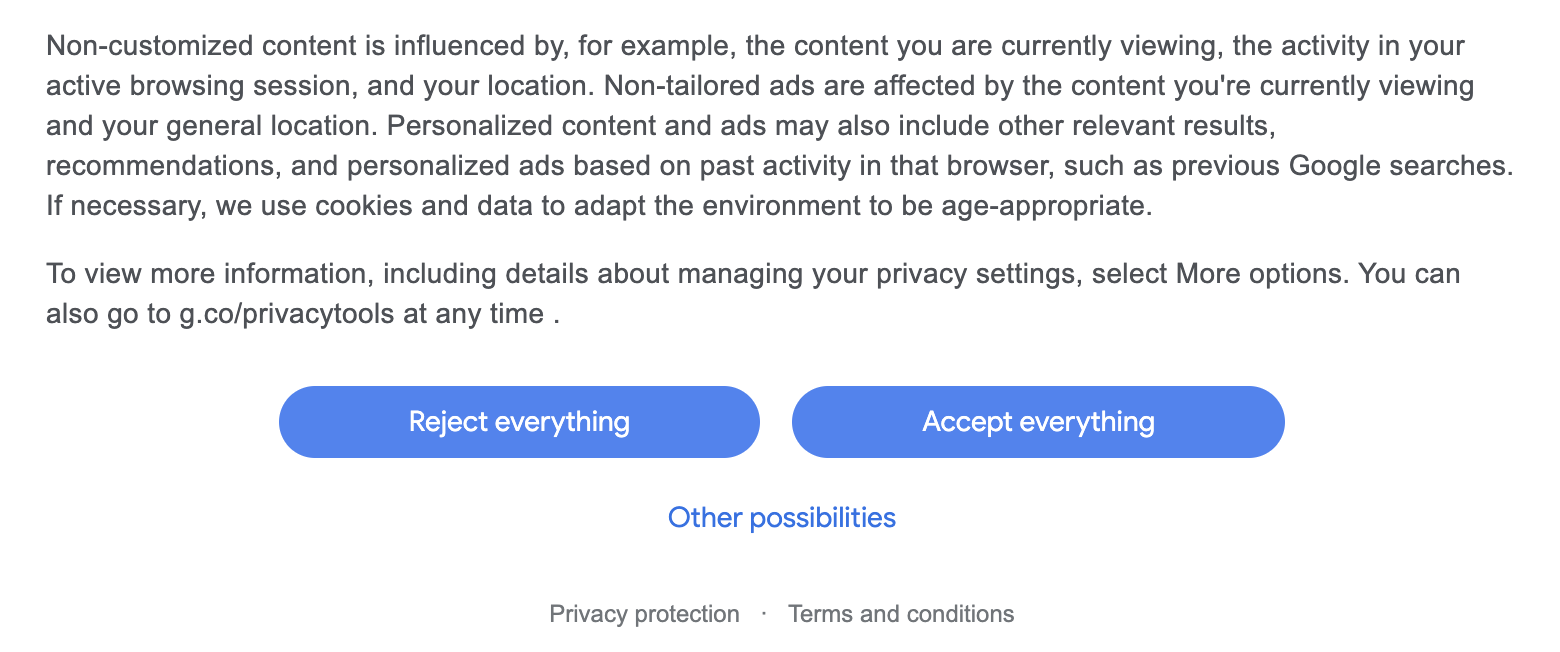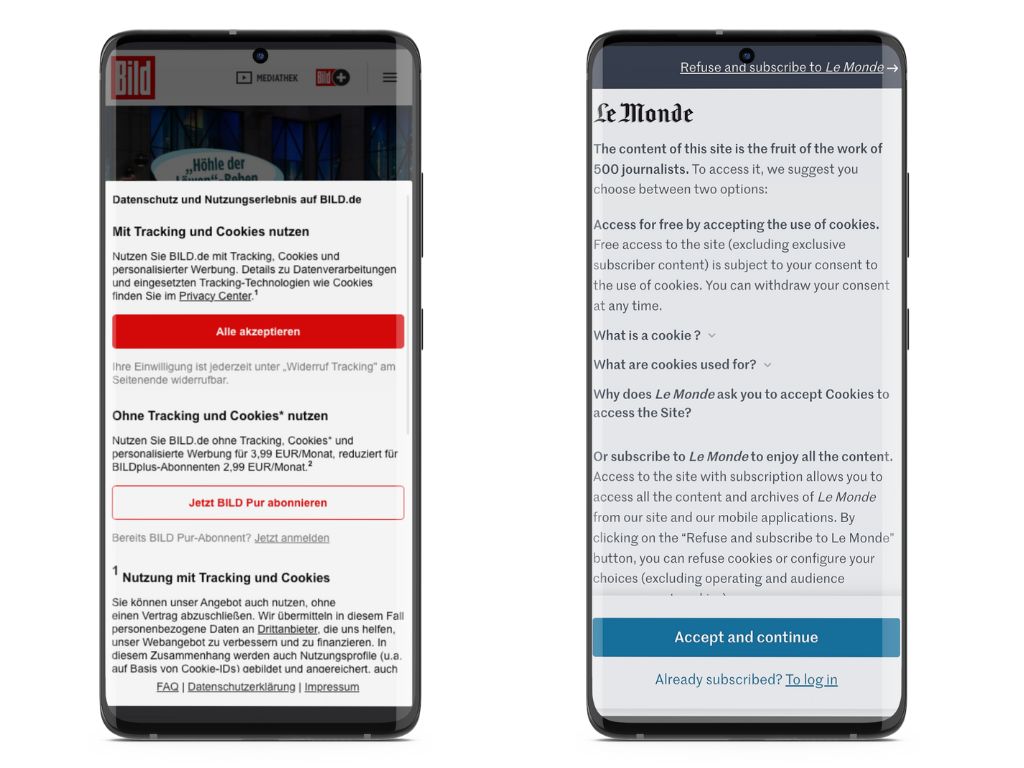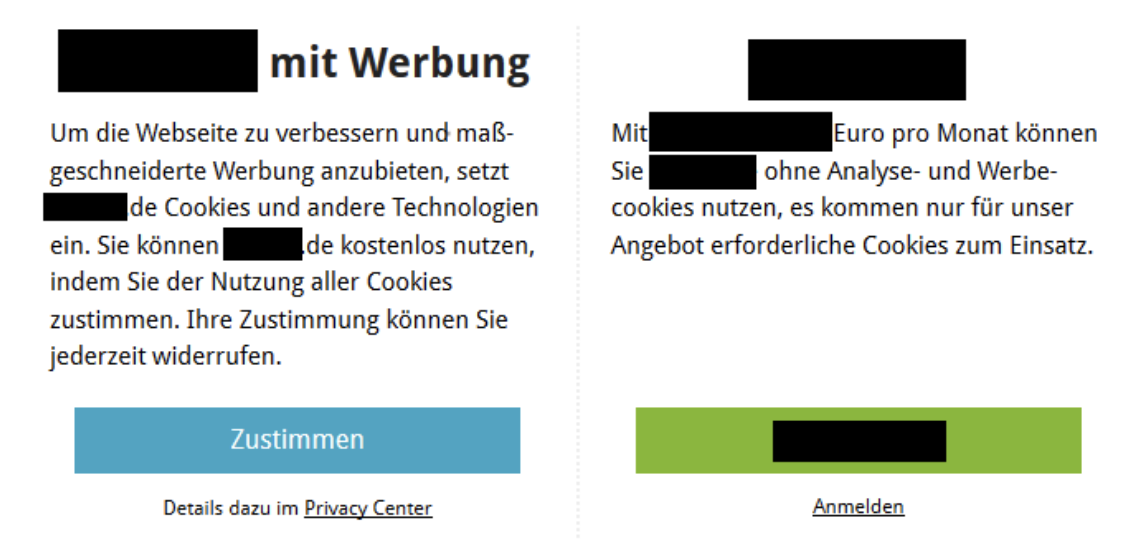Consent messages, the so-called cookie banners, had been around for several years before they became mandatory for all publishers offering services to visitors from the European Union. Even if the initial discussions predicting UX hell unleashed after implementing cookie banners were partly confirmed, today we can say that website visitors have gotten used to them. After all, visitors often have no choice and must select an option in order to access the content.
Based on general ePrivacy and GDPR rules interpretation, forcing a choice is questionable. How should publishers deal with visitors browsing their, often expensively produced, content without the ability to track them properly and monetize them effectively?
Trends applied by the Western European publishers show us how to ensure a high cookie-consent rate and thus save a significant part of the revenue from personalised advertising. This could be a revenue-saving way out of uncertainty for advertising-first publishers.
Disclaimer: The article is an assessment of the current situation, we do not provide legal advice in it. Any changes in the privacy strategy or CMP in your organisation should be consulted with your law department or a local regulator.
Limitations publishers are experiencing
Product departments burn expensive analytical hours to investigate methods and models that would ensure the highest possible cookie consent rate and thus the lowest possible impact on revenue from targeted advertising. However, options of modifying layouts, colours and buttons priority have been significantly reduced by the new regulations. Consent banner layout has become more standardised.
These requirements were pointed out by publishers as the most limiting:
- The cookie bar must not occupy more than the space necessary, it should not cover a larger area of the viewport than is needed for informed selection -
- The cookie banner cannot serve as a cookie wall. Forcing choice and denying access to content is not allowed.
- Low consent rates and the number of visitors who disagree, caused by the equivalence of the possibilities
If you feel like you know well what we are talking about, stay positive, there is a solution. It's called a Cookie Paywall or “PUR model”. Before diving into the concept explanation, let's take a look at what effect this unfortunate situation has on the overall publishing business.
Lost programmatic revenue and blind analysts
Revenues from programmatic inventory monetization often make up tens of percent of the publisher's total revenue in our geographic conditions. Any non-optimal implementation of the cookie bar therefore takes its toll on a daily basis in the form of lost revenue from non-monetized visitors.
An example of a non-optimal implementation is, If you offer visitors an option to “disagree” or “reject” in the cookie bar equivalent to the option of “agree” or “accept” (as shown in the picture below), the number of consents collected decreases by approximately 20-30%. This can put you in an unenviable situation.

Most of the relevant advertising networks use cookies not only for more precise targeting of advertising, but also for monitoring the impressions themselves. A good example is frequency capping -restricting the number of times a specific visitor to a website is shown a particular advertisement - which loses its relevance without consent. Therefore, advertising networks will not show any ads to the reader without the present consent. Alternatively, cookie-less advertising networks, on the other hand, achieve extremely low, even negligible results.
Another serious issue is that you are not able to track visitors who reject consent through analytical tools such as Google Analytics, which uses cookies to track visitor behaviour. Therefore, without the use of modelling tools available only in the GA4 environment, you have no idea what added value such a visitor has for your business. For increased readers' engagement, knowing the characters of your audience and what kind of content they are looking for can improve the quality of your work.
Other problems publishers are experiencing are
- Rising bounce rates on the landing page after deploying CMP
- Choosing a suboptimal CMP negatively affecting website performance
Despite these factors, the EU regulations say you are obliged to make the content available to the reader. However, this regulation may not apply in all circumstances, which are described in the next chapter.
The key to success is subscription
Following a precedent-setting case by the Austrian regulator, websites with digital subscriptions have found a way to save a large portion of their advertising revenue while providing readers with a fair no-tracking alternative. This model is already well settled in Austrian, French and German markets.

Read also:
How REMP (Readers Engagement & Monetization Platform) can help you grow subscriber revenue
Long story short, if you provide visitors with an alternative access to the content, without tracking and for a fair price, the cookie banner can be used in the form of a Cookie wall, preventing access to the content and thus limiting the offer to the visitor to only 2 options: “Consent or Pay”. You might have heard of the “PUR model”, which is how Western European publishers refer to this solution.
For a clearer demonstration, let's see a few examples:

Validity of this implementation is backed by the German State Commissioner for Data Protection Lower Saxony: “It is not a violation against voluntariness if, in addition to the consent, the alternative is offered to bring about the visibility of the content through an appropriate payment.” See an example below:

Will Eastern Europe follow the Western publishers?
A few publishers are starting to experiment with a cookie paywall solution in Eastern Europe. By opening these discussions and learning from the best practices applied in Western Europe, it is only a matter of time for the model to penetrate smaller markets, as well. Reader revenue recovered and a fair alternative provided to visitors is what truly matters.
Whether subscriptions or donations, cookie limitations and the Cookie paywall model are another arguments for exploring and experimenting with reader revenue strategies.
Is the Cookie Paywall model valid, legal and sustainable in the long run?
Each EU member country has different national legislations when it comes to privacy protection and we recommend consulting its validity with the experts and regulators in your country. However, due to its wide adoption by the key players in Western Europe, the PUR model could be part of the guidelines of regulators in Eastern European countries in the near future.
The NYOB organisation, a long-time critic of publishers' approach to privacy protection on the Internet, filed an official complaint against the "Consent or Pay" concept. If the regulator agrees with the complaint, it may lose weight.
However, validity of the Cookie paywall was also lately recognized by French regulator CNIL, more context can be found in David Pfau's article - CNIL legitimises cookie walls and PUR models.
Latest posts
VIEW ALL
Rewarded ads on the web: Delivering surprisingly high €30+ CPMs for publishers

Beyond pageviews: Building sustainable media through diversified revenue and deeper audience connections

Case study: Denník N’s bold move resulted in +70% subscriber retention. Discover the strategies behind their impressive results


 Slovenčina
Slovenčina 